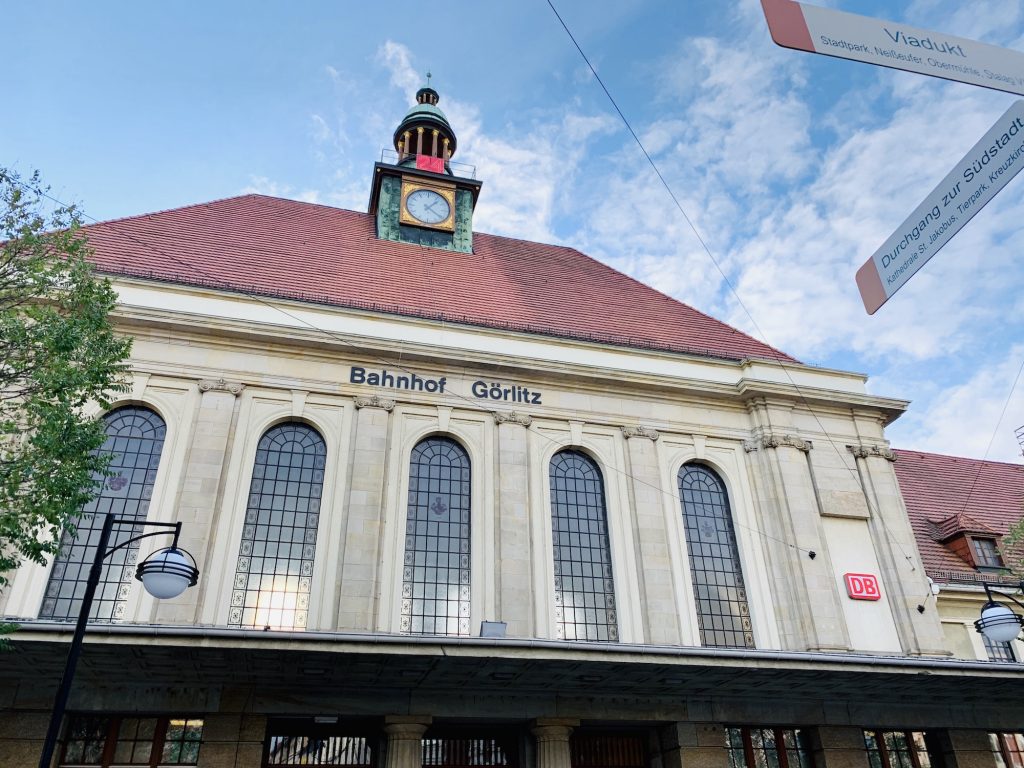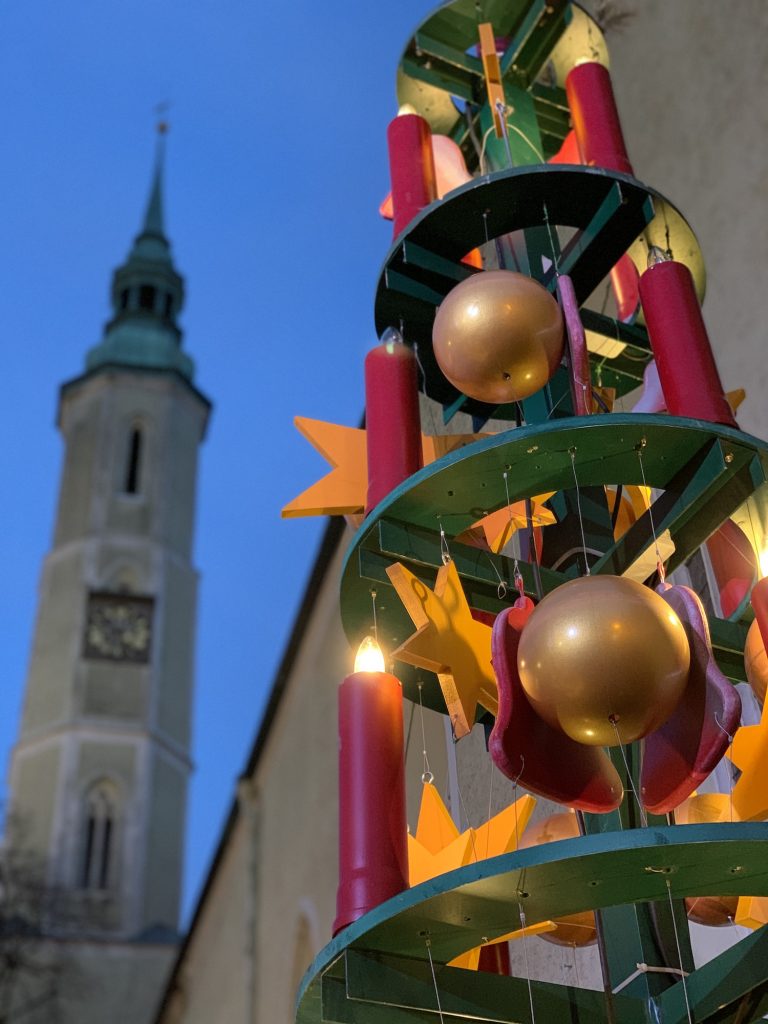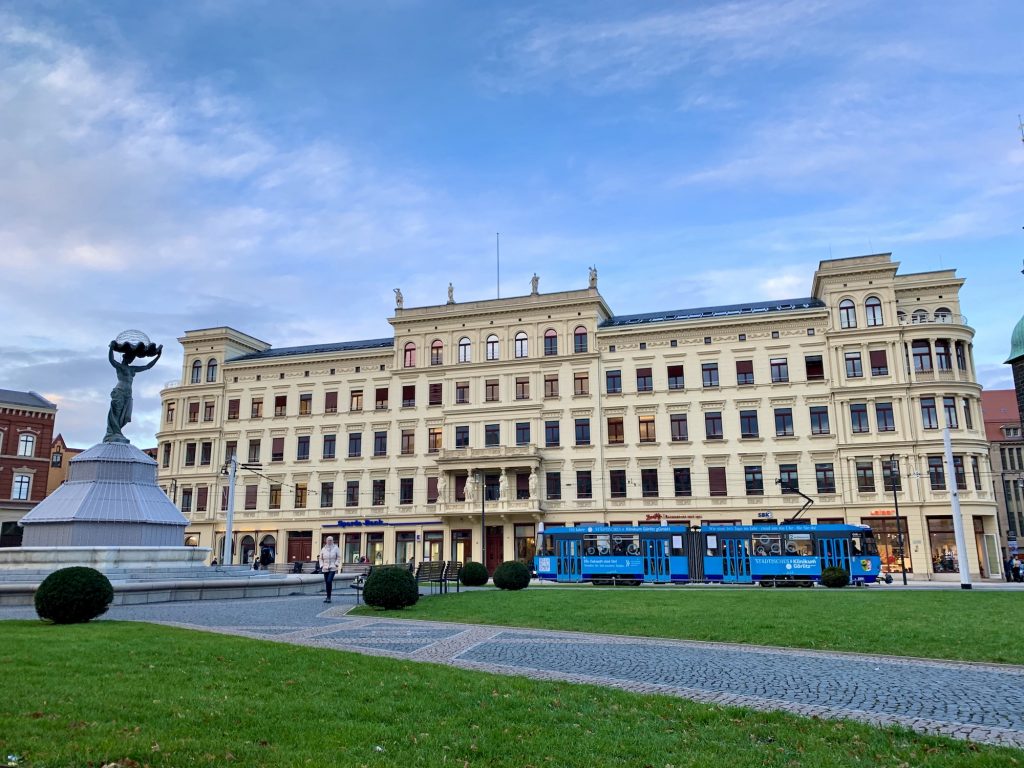A day in historic Görlitz, Germany’s hidden gem
The air is thick with cinnamon and cloves, roasted almonds and sweet pastries. Artisans busy themselves selling handmade decorations and handicrafts to curious shoppers. There’s stollen (a traditional sweet bread filled with candied fruits) to fortify you and hot mulled wine to warm you up. The Silesian Christmas Market in Görlitz is full of festive cheer, but Germany’s easternmost town is steeped in history and there’s a lot more here to discover.
With 4,000 listed buildings, Görlitz is a veritable catalogue of architectural styles. Unlike many cities in Germany, it was spared the bombs of the Second World War and the eyesores of post-war construction. What remains is an intact old town with winding streets and richly decorated façades, fortifications, churches and town houses from Gothic to Renaissance and Baroque to Art Nouveau. That the city was named a European Capital of Culture should come as no surprise.
The Grand Budapest Hotel
The first port of call for any visitor to the city is the Kaufhaus Görlitz, an elegant Art Nouveau department store and one of the best preserved of its kind in the world. Its ornate staircases, elaborate chandeliers and decorative glass dome are relics of a bygone era.
The region’s tumultuous past is reflected in the building’s history. Opened in 1913, the department store flourished during the Roaring Twenties as spending power increased. After WWII, it became an East German department store selling socialist fashion and merchandise and when the Wall fell and Germany reunified, it was passed between various investors before finally closing its doors. For years now, the grand building has stood empty.
Many believe this to have been a blessing in disguise, however, as American director Wes Anderson stumbled across the Kaufhaus Görlitz by chance while searching for filming locations, transforming the store’s empty foyer into a magnificent hotel lobby for his eccentric film “The Grand Budapest Hotel”. Renewed interest in the building ever since has led to renewed investment and a 2021 reopening is now in the works.
As you walk through the old town, you pass a string of grand buildings and façades: the Museum of Natural History, the Theater Görlitz, the Kaisertrutz – one of the city’s former bastions – and the Museum of Cultural History. Opposite is the Reichenbach Tower, which offers fantastic views over the roofs, gables and towers of the old medieval town. You can also see, on the other side of the river, Görlitz’s other half, the Polish town of Zgorzelec.
Silesian Christmas Market
Behind the Reichenbach Tower is the Obermarkt, a large square lined with Baroque town houses. It’s home to the Silesian Christmas Market with its mulled wine, handicrafts, ice skating, and carol singing. Beautiful Moravian stars – traditional symbols of Advent in this part of Silesia – are hanging everywhere, creating a unique atmosphere only found in these parts.
At the end of the square is the sumptuously decorated Church of the Holy Trinity with its opulent “Golden Mary” altar. Walking through the narrow Brüderstraße leads you to the Untermarkt, the main square of the old town. The late Gothic, Renaissance and Baroque buildings that line the square are testament to the wealth and status of the city’s former inhabitants. Dominating the square is the tower of the Town Hall, its clock and golden hands installed here over four hundred years ago. To the right, Haus Schönhof juts out onto the street. Built in 1526, it is one of the oldest Renaissance houses in all of Germany.
On the other side of the square sits the Alte Ratsapotheke – the Old Council Pharmacy – famous for the two intricately painted sundials painted on its façade back in 1550. A few hundred yards further down Peterstraße lies the imposing St. Peter and Paul Church, the largest church in the region, its two white Gothic spires towering over the old town.
And then there’s the Heiliges Grab, or Holy Sepulchre – a replica of the tomb of Christ in its medieval form. In the late 1400s, the city’s mayor went on pilgrimage to Jerusalem and acquired the plans for the Church of the Holy Sepulchre. Back in Görlitz, he built an exact replica, including the Via Dolorosa, Golgotha, the Kidron Valley, and the Mount of Olives. In all its tranquillity, it’s the perfect place to end a visit to Görlitz. After a busy day discovering one of Germany’s most beautiful and lesser-known cities, it’s time to head home – perhaps with a final mulled wine for the road.
Photos © Bart Giepmans / Elke Stamm

















Leave a Comment